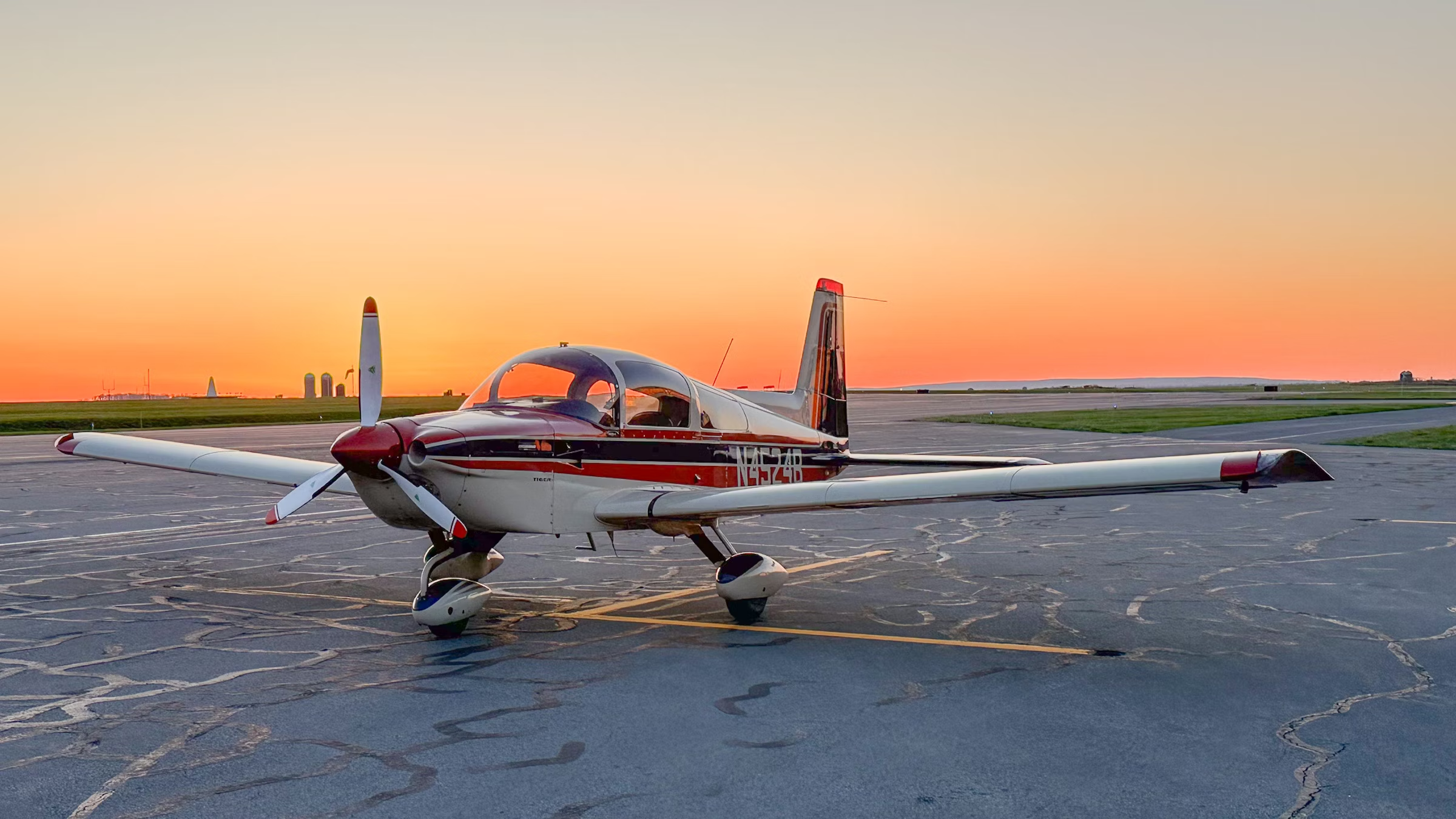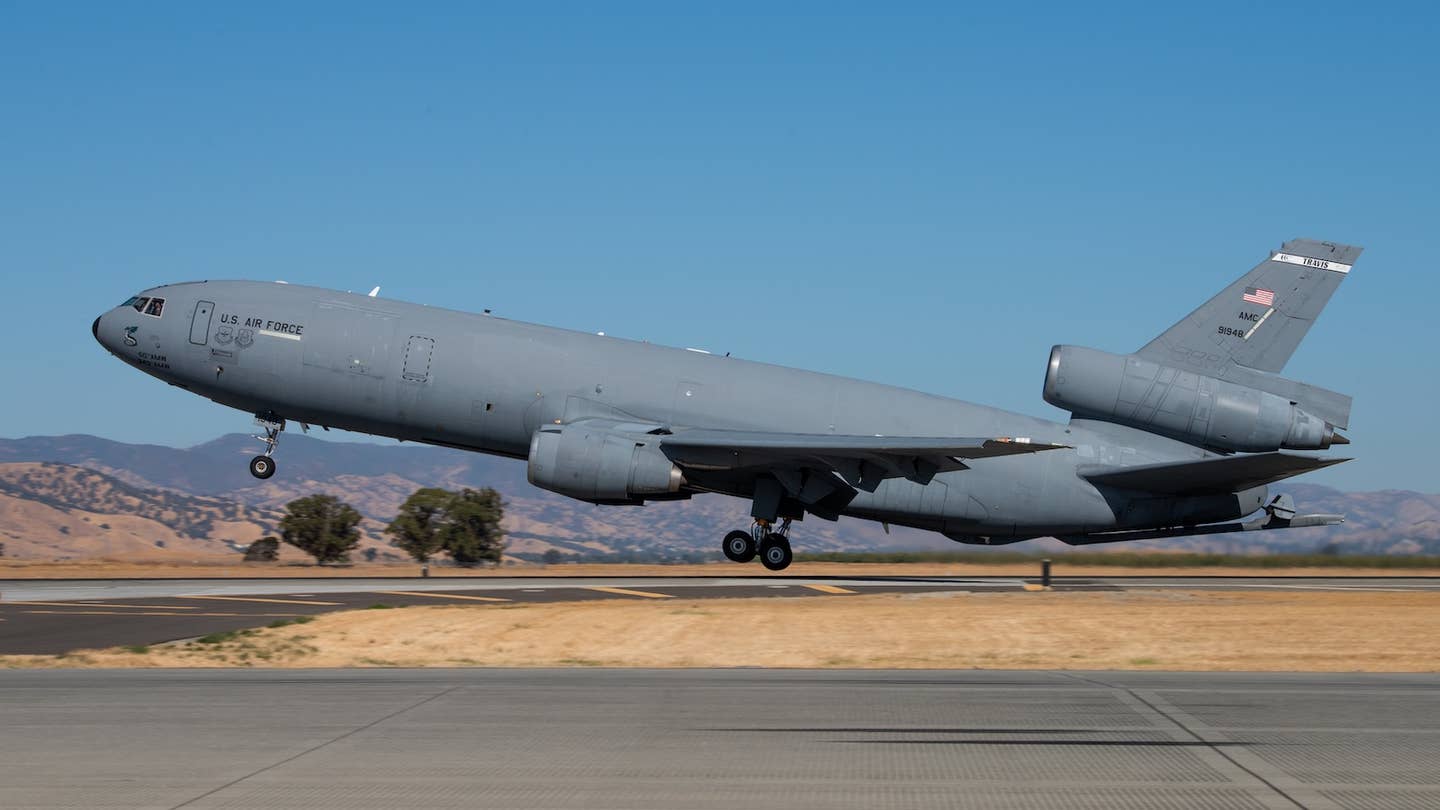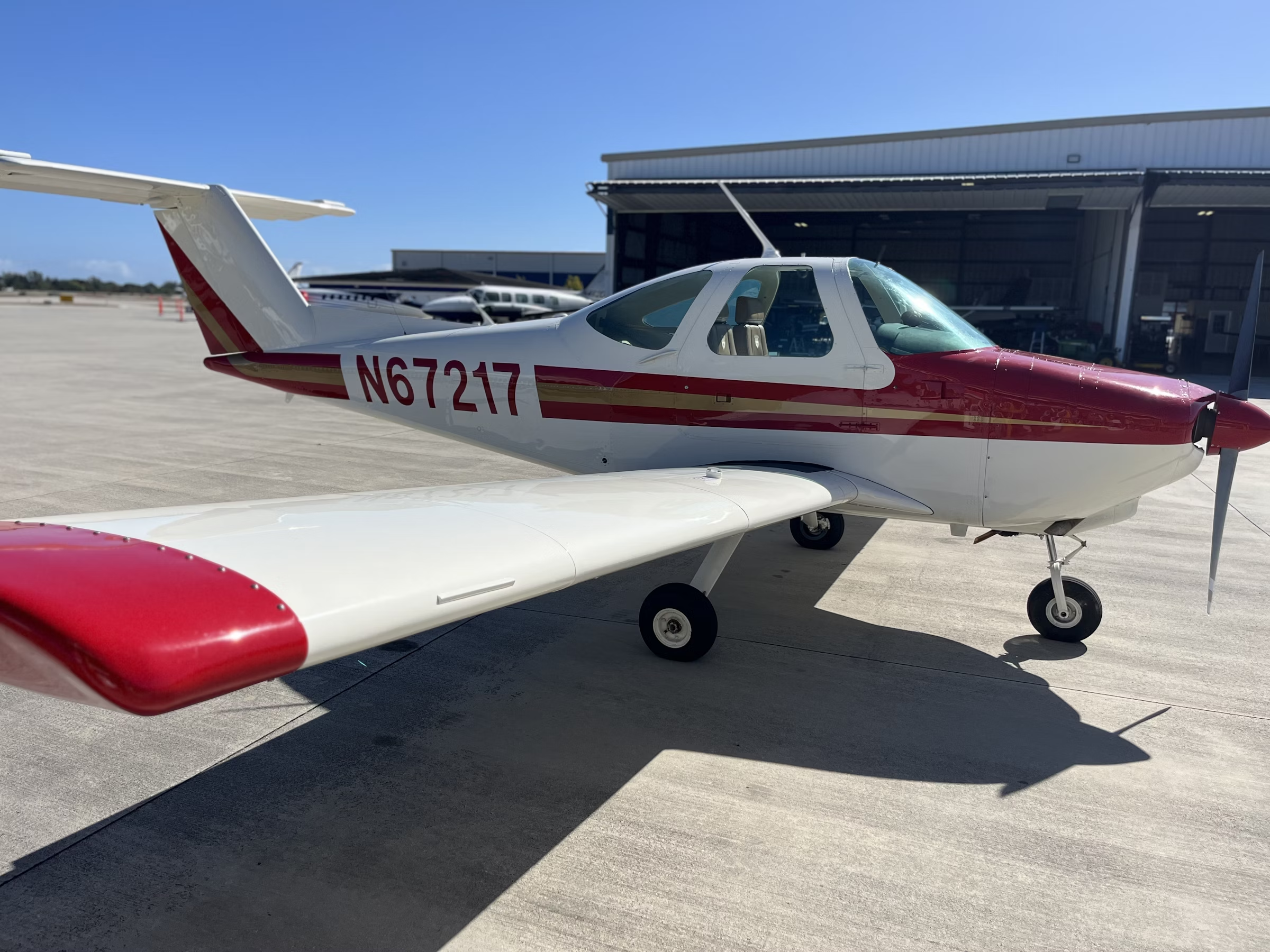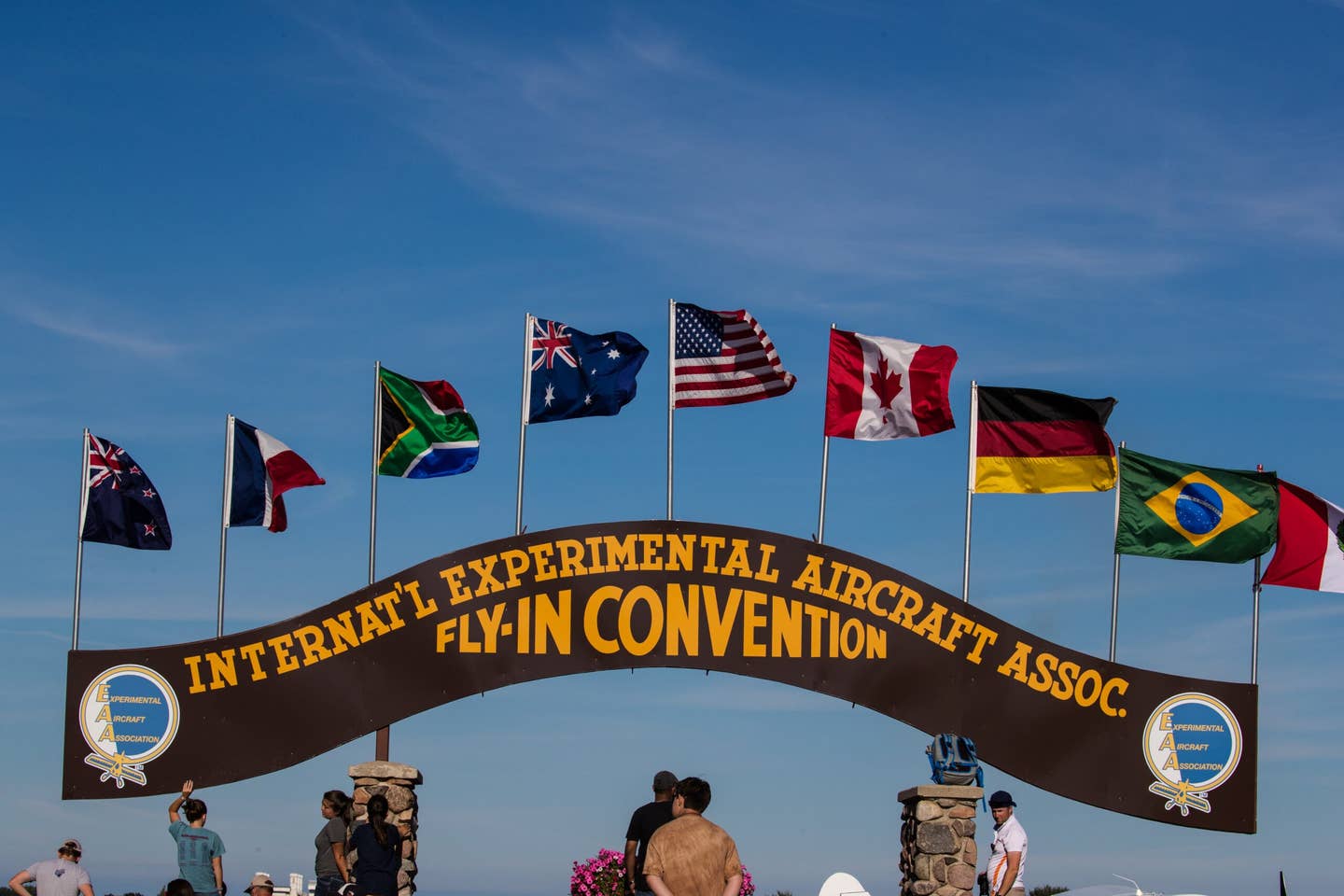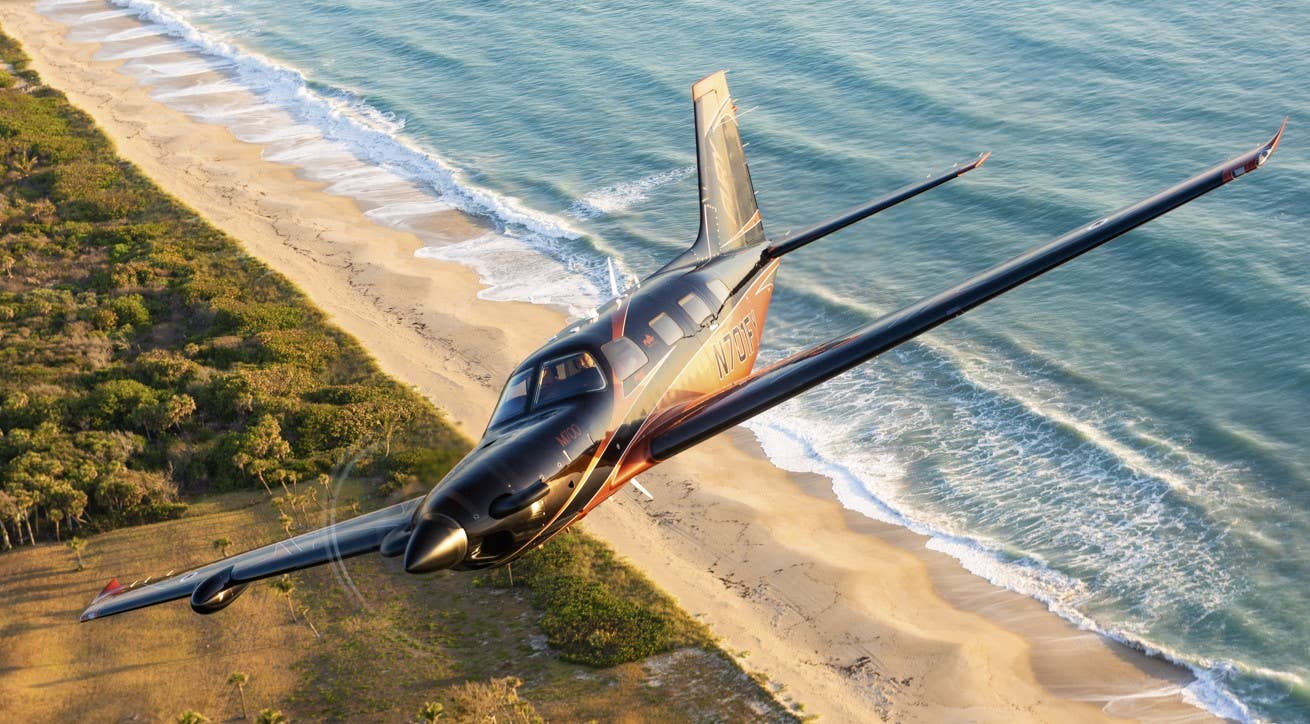
Piper gave its late single-engine aircraft a name that reflected its goal of speed and performance—Fury. [Leonardo Correa Luna]
It is about speed.
Because it is always about speed.
For Piper singles, it started with the Malibu since Piper had long wanted to build a pressurized piston single that would outrun Cessna’s pressurized 210. Delivered at the end of 1983, the PA-46-310P Malibu, with its cabin-class appointments did just that. Naturally, Cessna’s nose was out of joint, so it developed the R model of the P210, which was introduced in 1985 and was one whole knot faster than the Malibu. Forty were sold before production ceased for good.
If you're not already a subscriber, what are you waiting for? Subscribe today to get the issue as soon as it is released in either Print or Digital formats.
Subscribe NowOf course, Piper couldn’t let an out-of-production Cessna be faster than its top-of-the-line single. By 1989 it was delivering the PA-46-350P Malibu Mirage, which whistled along at a maximum cruise speed of 213 knots.
However, about that time there was a new sort of single-engine entrant into the speed competition—turboprop power. By 1990, the TBM 700 was reaching customers. Then, Piper watched as Malibu and Mirage owners paid big money for the JetProp turboprop conversion for their birds, producing speeds in the 260-knot range.
It was not to be tolerated.
It wasn’t.
Piper made significant tweaks to the PA-46 wings and tail to handle a big power upgrade as it dropped a 500 hp turboprop up front. The new PA-46-500TP Meridian began deliveries just before the close of the century in November 2000. With a max cruise of 260 knots at a lower fuel burn than the JetProp, the Meridian was an immediate success.
Not willing to leave well enough alone and recognizing the payload limitations of the Meridian, Piper developed a new wing that could carry more fuel for the tried-and-true PA-46 fuselage, upped the horsepower to 600 and introduced the M600 while announcing that the PA-46 line would henceforth be referred to as the M-Class. The Malibu Mirage became the M350 (for its 350 hp engine), and the Meridian the M500. With deliveries starting in 2016, the M600 had 50 percent more range than the M500 and could carry 100 more pounds in the cabin. Yet, it was about speed—it was 14 knots faster at 274 ktas. It immediately outsold the M500 handily.
Not surprisingly, customers figuratively pounded the table crying, “We want more!” Not being the slightest bit foolish, Piper responded “your wish is our command” and dropped even more puff—700 hp—into the airframe and certified the M700 (PA-46-701TP) earlier this year. This time Piper gave it a name that reflected its goal of speed and performance—Fury. Gone are the laid-back Malibu, Mirage, and Meridian names: It’s time for something fire-breathing.
The name Fury harkens back to a Royal Air Force biplane fighter of the 1930s. However, with an ability to cruise at 301 ktas, Piper’s Fury is more than 100 knots faster than the RAF’s 640 hp combat machine from Hawker. As the M700 breaks the 300-knot barrier for personal single-engine aircraft, the name Fury seems most appropriate. Good grief, at $4.2 million nicely equipped, it’s within 5 knots of being as fast as the Cirrus Vision jet.
The Basics
The fuselage is almost pure Malibu/M350—the aircraft are assembled on the same production line with some changes for the needs of the M700’s speed. Max differential pressurization is 5.5 psi, giving an 8,244-foot cabin at FL 280. The Pratt & Whitney PT6A-52 powerplant is flat-rated at 700 hp—which it can maintain up through FL 240. It’s also used on the King Air 260, where it puts out 850 hp so it’s not breathing hard on the M700. Max operating altitude is 30,000 feet. At FL 250 max cruise is 301 ktas on a standard day, where it burns 365 pph (55 gph). Usable fuel is 260 gallons (1,742 pounds).
Piper advertises range at max cruise with 45-minute reserve as 1,149 nm. Slowing just 9 knots pushes the range up more than 200 nm to 1,424. Pulling the power back to what one considers max cruise for many piston singles, 206 ktas, bumps the range to a bladder-aching 1,852 nm. Yes, I know, people are buying the M700 for speed because it’s always about speed. I suspect that M700s are going to spend a significant portion of their flying lives at or near 301 knots.
Max rate of climb at sea level—2,048 fpm—is 30 percent greater than the M600. The Fury can claw its way to FL 250 in 13.9 minutes. Welcome to power and a five-bladed prop that can convert it to thrust. It’s no surprise that with the introduction of the M700, Piper is phasing out the M600.
The M700 I flew had an empty weight of 3,855 pounds—and it appeared to have every available option. That’s 125 pounds more than Piper advertises and 79 pounds more than the average for the first aircraft off the assembly line. With a maximum ramp weight of 6,050 pounds, the aircraft I flew had a useful load of 2,195 pounds. Max takeoff weight is 6,000 pounds—thereby making it a BasicMed aircraft so long as the PIC stays below the flight levels. With full fuel, 453 pounds can be carried in the cabin.
Max landing weight is 5,800 pounds, so 200 pounds of fuel must be burned off after a gross weight launch. Max zero fuel weight is 5,050 pounds (any weight above 5,050 pounds must be in fuel). That allows for a maximum of 1,195 pounds to be carried in the cabin of the aircraft I flew. Filling the seats means watching individual weights, although it can come close to carrying six 200-pounders and no baggage. The aircraft is designed to be owner-flown, and it just isn’t that common for owner/pilots to fill the seats in their aircraft. For families with three or four kids, the aircraft might be perfect if care is taken in how much stuff everyone carries.
With a max cabin load, 1,000 pounds (149 gallons) of fuel can be loaded. That's nearly three hours of flying at low cruise settings. Not bad at all.
When I ran some sample weight and balance problems, I observed that with full fuel and a partial passenger load, the center of gravity tended to stay near the middle of the envelope. However, with a full boat of passengers (I used 190 pounds each) and partial fuel, the aircraft was loaded 1.37 inches aft of the aft limit—and that’s with no baggage. The takeaway: If you’re going to fill the cabin, load the heavier folks forward.
Fortunately, with the G3000 avionics suite, running the departure and landing weight and balance is easy. Unless a pilot has the blind staggers and total disregard for self-preservation, it should be easy to keep the aircraft inside its loading envelope.
I’ll note here that I like the warranty offered through Piper’s Ultimate Care Program. It covers all scheduled maintenance either to 1,500 hours or the aircraft’s fifth annual inspection as well as labor and parts for any mandatory service bulletins.
Avionics
Beyond the speed of the Fury, the major selling point is the stunning avionics suite that comes standard. It includes a Garmin 3000 system that I observed to be seamlessly integrated into the aircraft, a GFC 700 Digital autopilot, autothrottle, GWX 75 weather radar, GDL60 datalink, integrated digital cabin pressurization, and HALO safety system, which was the stuff of science fiction only a few years ago.
It also includes Garmin’s emergency Autoland, a fully autonomous landing system that can be activated manually by anyone in the aircraft or automatically if the system senses pilot incapacitation. Reduced to its essentials, once triggered, Autoland selects an appropriate airport for landing, notifies ATC of the emergency, keeps the occupants advised as to what’s going on, and lands the aircraft—activating deicing equipment as needed, extending the flaps and gear when the time comes. It slows the aircraft to a stop on the runway, shuts down the engine, and instructs the occupants on safe exit from the aircraft.
Garmin won the prestigious Collier Trophy for Autoland in 2020. The Collier isn’t given away for simply showing up at a fly-in and not wrecking the aircraft on landing. It is awarded “for the greatest achievement in aeronautics or astronautics in America, with respect to improving the performance, efficiency, and safety of air or space vehicles, the value of which has been thoroughly demonstrated by actual use during the preceding year.” Other Collier winners have included the NASA/JPL’s Ingenuity Mars Helicopter Team and NASA/Northrop Grumman’s James Webb Telescope Industry Team.
As this is going to press, Autoland has not been used in anger, however, as with lifesaving whole aircraft parachutes, I think that it’s only a matter of time. In talking with Piper sales personnel, I was assured that the Garmin Autoland system has sold a number of M700s.
Above 14,100 feet with the autopilot engaged, HALO monitors pilot interaction for signs of hypoxia. If it detects hypoxia, it will fly the M700 to a lower altitude while it continues to monitor pilot activity. If activity is not detected, it will automatically activate Autoland.
Automatic Level Mode—a push-button— returns the aircraft to a wings-level attitude with zero vertical speed. In addition, Electronic Stability & Protection (ESP) is monitoring when the aircraft is being hand flown. Should selected pitch, bank, and speed (high or low) parameters be exceeded, the system gently applies control forces to return the aircraft to flight within the parameters. Given that in-flight loss of control is up there on the fatal accident causation list, I think this system may be a lifesaver, especially when things start going south in weather while a pilot is hand flying and having difficulty programming the automation.
The autothrottle is an integral part of the above systems, helping prevent overspeed or stall. I found that it was also handy on takeoff. Bring the power lever up to 800 pounds of torque, and the autothrottle takes over and sets max torque (1,840 foot-pounds) so the pilot doesn’t have to fiddle with setting power while the Fury is scorching down the runway toward its 75-knot rotation speed—it gets there quickly.
Walking Around It
Approaching the M700 Fury from head on, its clean lines and five-bladed prop serve notice that this flying machine was built to cook. The radome is on the leading edge of the wing, not in a draggy pod hanging from it. Even the exhaust stacks give the impression of speed as they’re subtly more swept and tapered than I’m used to seeing. I was advised that they help make the aircraft quieter than the M600 and the engine slightly more efficient.
The large cuff on the inboard leading edge of the wing helps the Fury meet the 61-knot maximum stall speed for single-engine aircraft and it, along with some fairings, are easily removable for maintenance. The cuff also allows for fuel lines from the wings to the engine to be routed outside of the fuselage pressure vessel, a big plus for crashworthiness. The two big nonicing NACA ducts under the nose deliver air to the engine without a need for ice vanes, inertial separator, or inlet deicing. The large flaps have three positions—up, takeoff/approach, and down.
Walking around the Fury with Joel Glunt, Piper’s head of flight test, I was impressed by the overall fit and finish. The paint job was first rate, and I was interested to see the colors change subtly when viewed from different angles.
Other than the shape of the exhaust stacks, the only noticeable exterior difference between the M600 and M700 is a Gurney flap—a low-drag, high-lift device from the auto racing world—on the left side of the rudder trim tab. As Glunt pointed out, adding more power to an aircraft can be destabilizing. To achieve the desired roll and yaw stability on the M700, the Gurney flap was added, and rudder travel was increased.
The Cabin
The clamshell airstair door is located just aft of the left wing, giving access to the middle of the cabin. The cabin is fairly tight at 49.5 inches wide and 47 inches tall—one of the reasons the bird is fast. Length from the aft pressure bulkhead to the instrument panel is 148 inches. Taller passengers will be intertwining legs when facing each other in the club seats.
As much as 100 pounds of baggage can be stowed behind the rear seats. They fold forward, but getting heavy suitcases in and out takes some effort. There is a provision for storing as many as three sets of golf clubs.
The quality of the interior appointments is first rate, in keeping with the demands of those who occupy the cabins of top-of-the-line turboprops. The seats are comfortable, the leather is beautiful, the colors available are impressive, and such amenities as cup holders and USB ports are in easy reach.
Getting into the pilot seats for anyone over 6-foot tall is a challenge. The M-series machines were not designed for tall people—they were designed to go fast, so it’s a compromise. Once in the left seat (I’m 6-foot-4), my head was against the headliner even before putting on a headset. Legroom is only just adequate.
From a crashworthiness standpoint, the flight deck is, in my opinion, not satisfactory. There is little flail space in the event of a quick stop, and there is an upper switch panel in front of each pilot that is likely to cause head injury during the most common type of general aviation aircraft accident—runway loss of control and impact below stall speed. The upper switch panel also restricts visibility upward in turns and steep descents.
I was amazed at the flight deck restraint system—it’s a set of three-point belts that look like they came from an old Cherokee. They are not only jarringly out of place in the overall ambiance of the interior, they are, in my opinion, inadequate for an aircraft with the Fury’s potential energy. For the tight space available for the pilots, I think that the very best in occupant protection for those in the pointy end of the arrow should be installed—airbag seat belts.
Flying It
Firing up the Fury is pure PT6—turn the engine, wait a moment, introduce fuel, and monitor temperature and pressure as it lights off and comes up to speed. The G3000 boots up quickly. It will display whatever you need in the moment—checklist, synoptic pages showing systems status, taxiway routing, even synthetic vision on the ground while taxiing.
Once moving, the nosewheel steering is positive and predictable. There is enough thrust at idle due to prop pitch and the faired exhausts that it’s usually necessary to taxi in Beta with occasional forays into reverse. There is a nose gear squat switch that locks out Beta and reverse in flight.
Acceleration on takeoff is just plain exhilarating. Directional control was positive throughout the takeoff roll and climbout with much less right rudder required than I expected. Published takeoff performance on a standard day at sea level is a ground roll of 1,261 feet and over an obstacle in 1,994 feet. While Glunt and I weren’t in a position to measure our takeoff distance, loaded about 300 pounds below gross weight, it looked like we didn’t roll much more than 1,000 feet.
Rotation required only light back pressure, but once the M700 broke ground, significant nose-down trim was required immediately, increasing workload as the gear and flaps were retracted. I suspect that moving the gear aft with the new wing (for the M600 and M700) meant that setting takeoff trim was a tradeoff between control force required on rotation at 75 knots (as opposed to 85 knots for the M600) and the trim required for climb at VY—122 knots.
In the initial climb, I saw a rate of 2,300 fpm, which was consistent with our weight and a published rate of 2,048 fpm at gross weight on a standard day at sea level. Handling was positive and lighter in pitch than I anticipated for an aircraft of this size with a downspring in the pitch control system. Max yoke deflection in roll is only 45 degrees, something that I suspected would make it easy to overcontrol as little control displacement is needed to deflect the ailerons. That was initially the case, but within a few minutes I adjusted to the pressure required to get the response desired. The aircraft can be tossed around nicely.
Leveling at 17,500 feet and holding max torque, I observed a true airspeed of 291 knots burning 385 pph. The book called for 284 ktas while burning 390 pph.
Descending below 10,000 feet to do air work revealed that the M700 is rock solid in slow flight and just plain fun to fly in steep turns—the long nose helps with pitch control. The stall is a nonevent, with lots of warning and a straight-ahead, gentle pitch down.
Programming the Garmin automation for a descent and intercept for an ILS approach was as it usually is—easy. The autothrottle nailed programmed speeds and descent rates.
Disconnecting the autopilot and hand flying the ILS revealed that the Fury stayed on its trimmed speeds nicely. The hydraulically actuated gear can come down at 170 kias, with approach flaps at 147 kias and full flaps at a surprisingly low speed, 112 kias. There is a noticeable pitch change with flap extension and retraction. Gear extension causes what I considered to be a surprising amount of yaw as the nose gear comes down.
Holding 85 kias on final, bringing the power lever to idle, and making a good pull on the yoke gets the nose up smoothly for a 70-knot touchdown. Putting the nosewheel on the runway allows using reverse, and that big prop stops the aircraft rapidly without directional excursions.
In Conclusion
I liked what I experienced in the M700 Fury—more performance in an aircraft that is fun to fly matched with the most sophisticated avionics suite and safety automation available is quite a combination. Yes, it’s about speed, and it looks like Piper has come up with another fast-moving winner.
If you’re ready to pull the trigger on a new Piper turboprop, this one’s a bullet.
Cockpit at a Glance: Piper M700 Fury
A. The overhead panel contains switches for the electrical system, lighting and anti-icing systems but restricts the pilot's view upward.
B. The primary flight display is the leftmost of the three-screen Garmin G3000 glass panel, and as the name indicates, provides all primary flight information in a single display. It can be customized by the pilot.
C. The multifunction display is on the center screen of the G3000 panel and can be configured as desired. Here it is set to display engine status, navigation information, and traffic.
D. Dual touchscreen Controllers operate much of the G3000 avionics and are arranged for easy access from either front seat.
Spec Sheet: Piper M700 Fury
Price as Tested: $4,519,272 (N701FY, the fully equipped M700 demonstrator)
Engine: Pratt & Whitney PT6A-52
Propeller: Hartzell 5-blade composite 5D3-N338A1/78D01B
Horsepower: 700
Length: 29.7 ft.
Height: 11.5 ft.
Wingspan: 43.13 ft.
Wing Area: 209 sq. ft.
Wing Loading: at 6,000 lbs. = 28.71 lbs./sq. ft.
Power loading: @ MCP 8.57 lbs./hp
Cabin Width: 49.5 in.
Cabin Height: 47 in.
Max Takeoff Weight: 6,000 pounds
Max Zero Fuel Weight: 5,050
Standard Empty Weight: approx. 3,776.15 lbs.
Max Baggage: 100 lbs. in baggage compartment
Useful Load: approx. 2,273.85 lbs., depending on options
Max Usable Fuel: 1,742.6 lbs. usable/260 gal. usable
Service Ceiling: FL 300
Max Rate of Climb, MTOW, ISA, SL: 2,048 fpm
Max Cruise Speed: 301 ktas
Max Range: 1,526 nm with NBAA reserves, 1,852 nm maximum endurance at economy cruise
Fuel Consumption at Max Cruise: 365 lbs./hr.
Stall Speed, Flaps Up: 6,000 lbs. gear up, flaps up 73 kias
Stall Speed, Full Flaps: 6,000 lbs. gear down, flaps LND 62 kias
Takeoff Over 50 Ft. Obs: 1,994 ft. (ISA, sea level)
Landing Over 50 Ft. Obs: 1,950 ft. (ISA, sea level)
This feature first appeared in the July/August Issue 949 of the FLYING print edition.

Sign-up for newsletters & special offers!
Get the latest FLYING stories & special offers delivered directly to your inbox


